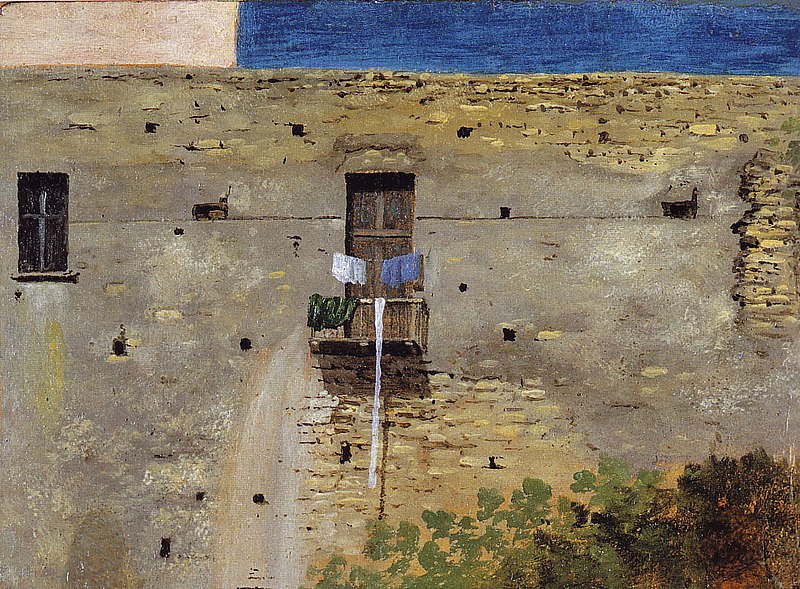Thomas Jones, Rooftops in Naples (detail), 1782
Thomas Girtin, The White House at Chelsea (raking light detail), 1800
The terrain of the paper underneath Thomas Girtin's The White House at Chelsea becomes visible at close range, in raking light (see Peter Bower's essay 'Tone, Texture and Strength: Girtin's Use of Paper' in the Tate's 2002 Girtin retrospective catalogue). Curators often show us explanatory photographs that resemble geological sections through the paint layers of old masterpieces. Microscopic images of pigment return us to the basic stuff of landscape - ochre, sienna, umber. Of course this 'thingly substructure', as Heidegger called it in 'The Origin of the Work of Art', should not be confused with the the actuality of the art work. The quality of the paper in Girtin's painting need not especially interest us (although it is less easy to argue that appreciation of an actual landscape requires no interest in its natural history, an issue I've discussed here before). Nevertheless, the scrutiny of both detail and overall effect has always been one of the pleasures of landscape art. In the paintings of Girtin's friend, Turner, the image always seems to be both abstract and naturalistic, however you crop it. His View of the Arsenal (below) is a vivid reminder of how artists release colour from pigment, so that it comes, in Heidegger's phrase, to shine forth. It is through this process that an art work 'lets the earth be the earth.'
J. M. W. Turner, View of the Arsenal (detail), c1840



